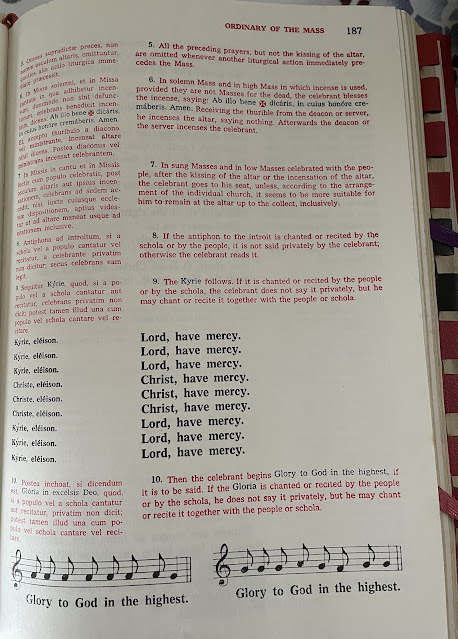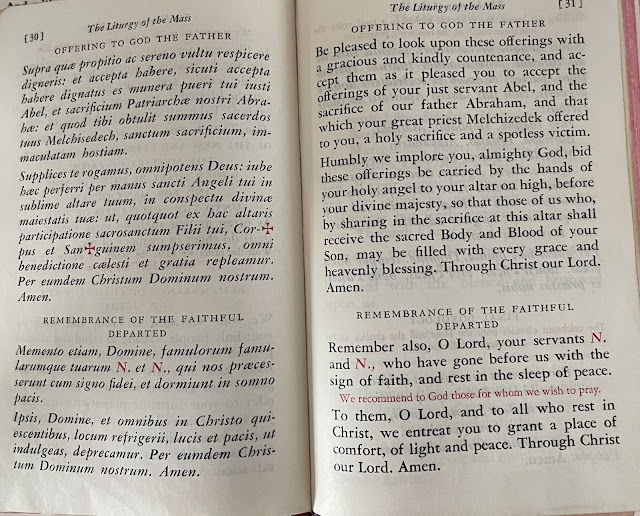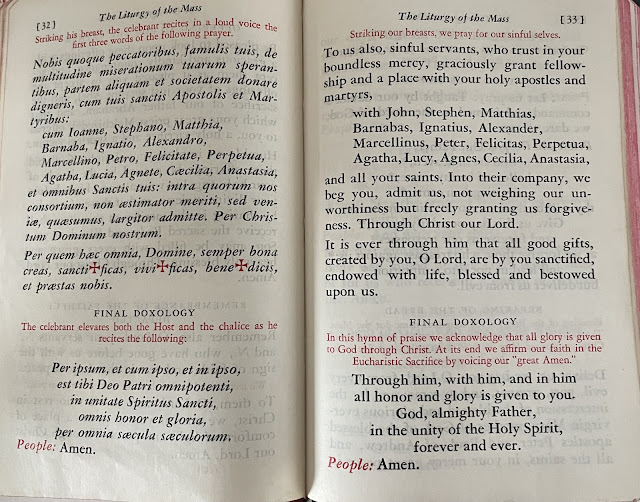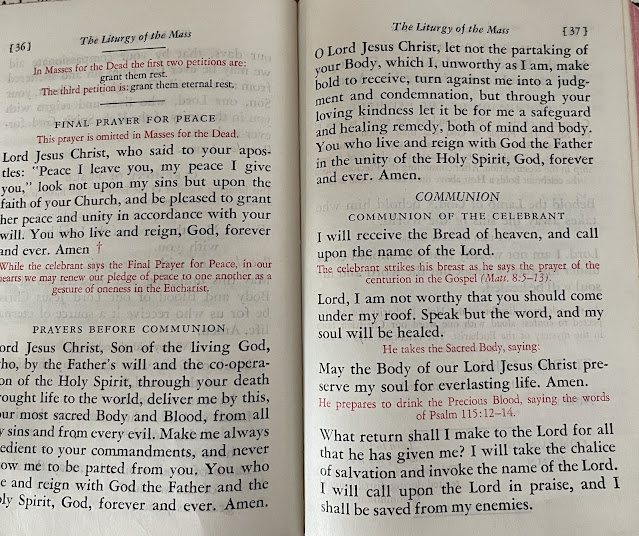Please note that this post took a great deal of time for me to take pictures of the Missals I used, to edit those pictures and then input them into my blog and in order to have them in order, I had to input them individually, which took a lot of my precious retirement time to do! And then I added commentary in between the photos, so please read those as you read what the 1966 Missal had!
These are photos from the official 1966 Roman Missal, basically the 1962 Roman Missal, but with a more literal interpretation of Sacrosanctum Concilium meaning a more conservative reform of the 1962 Roman Missal: conservative interpretation of “noble simplicity”; “maintaining Latin and Gregorian Chant but some English, but Roman Canon in Latin, with very conservative revision of rubrics. This Missal is a post-Vatican II Missal and should have remained the Order of Mass even if the Lectionary we currently have was applied to it. But the original Lectionary, at least for Sundays and particular daily feasts could have been maintained as year A with a new B, C, and D.
This is quite important! Please note toward the bottom of this page which says this Roman Missal approved by the American bishops and approved by the Vatican’s Consilium (who was charged with revising the Missal) according to Sacrosanctum Concilium, “for the implementation of Vatican II’s “Constitution on the Sacred Liturgy”! We all thought at the time, this was what Vatican II requested and in fact it was approved explicitly saying that!!!!:
The Maryknoll pew or laity missal used the official translation of the 1965 Roman Missal and provided all that the laity needed for full, conscious, active and actual participation. In this case it is for the 17th Sunday after Pentecost. Please note the propers, even for the offertory, as well as the Liturgy of the Word:The PATFOTA was simplified, omitting Psalm 42 and the Gloria Patri. In other words, the Requiem PATFOTA became the only version, Requiem or not:
Please note how the English translation of 1966 is closer to the revised English translation we now use:
The Suscipiat and Placeat, I am sure, are organic developments to assist with added actions on the part of the laity. The Suscipiat, the last prayer before the priest turns to the laity to say “Pray Brethern” gives the altar servers time to return to their place after the Lavabo and incensation of the congregation so they are in place for the “Pray Brethren”!
The same with the Placeat at the dismissal; after the priest says “go in peace” he turns to the altar and prays the prayer to the Holy Trinity, allowing enough time for the congregation to kneel for the final Blessing said after the Placeat!





















4 comments:
but where do the skate boards and clowns fit in. What about liturgical dancers. Oh the humanity, such suffering
to quote from the comments on another blog
"I’ve often thought the hatred for the Old Mass springs from the opening words of the prayers at the foot of the altar: Judica me Deus – Judge me, O God. The priests don’t want to be judged, and don’t want their parishioners, whom they have misled for years, to be judged"
for once and for all, the trouble with VII is not so much VII its that over the top asinine "SPIRIT of VII. It meant whatever the bag of hot air bloviating about it wanted it to mean. More destruction was done in it's "spirit"
The Novus Ordo is a hydra headed creature that promotes “disunity.” In stark contrast the TLM is simplicity personified and promotes unity. Yet most of our hierarchy is too dense and/or biased to see this
I have a 62 missel,but i would love to follow along with the 65 missile as mine has no latin. wonderfull work father. I belive this is what the council had in mind for the liturgy. Thank you, Thank you for your work. Your bringing a lot more light to what the council expected from the laity and the liturgy.Do you mnd if i follow you blog.
Post a Comment